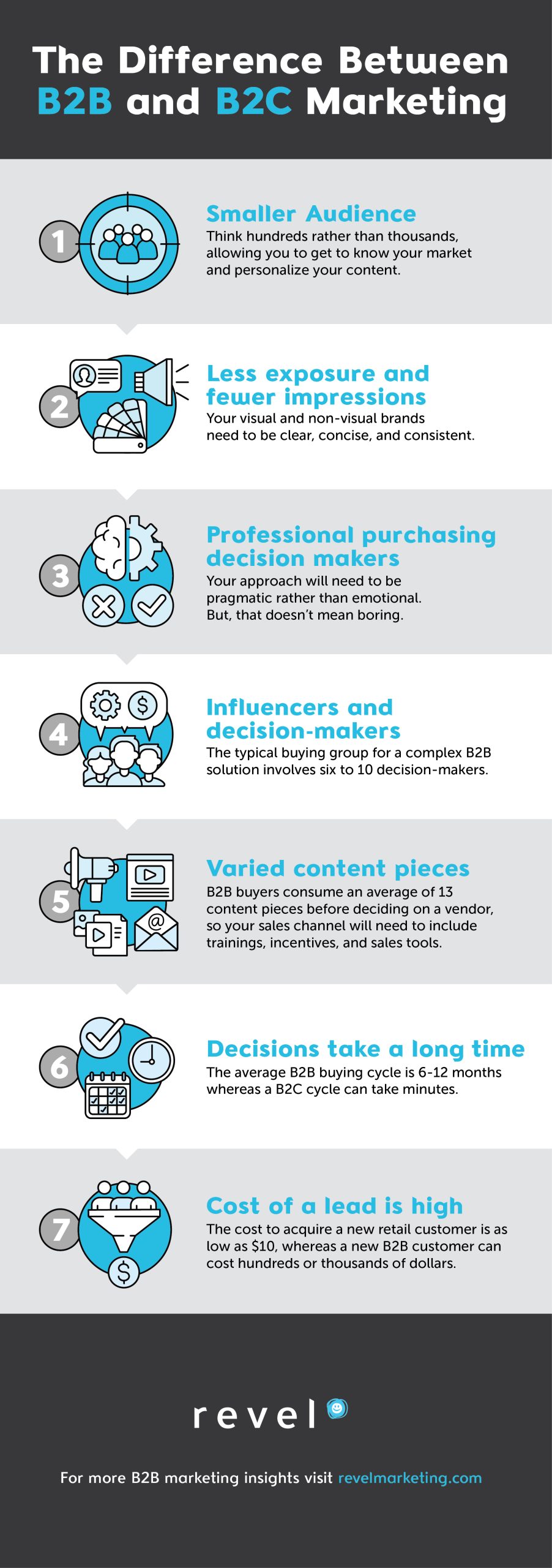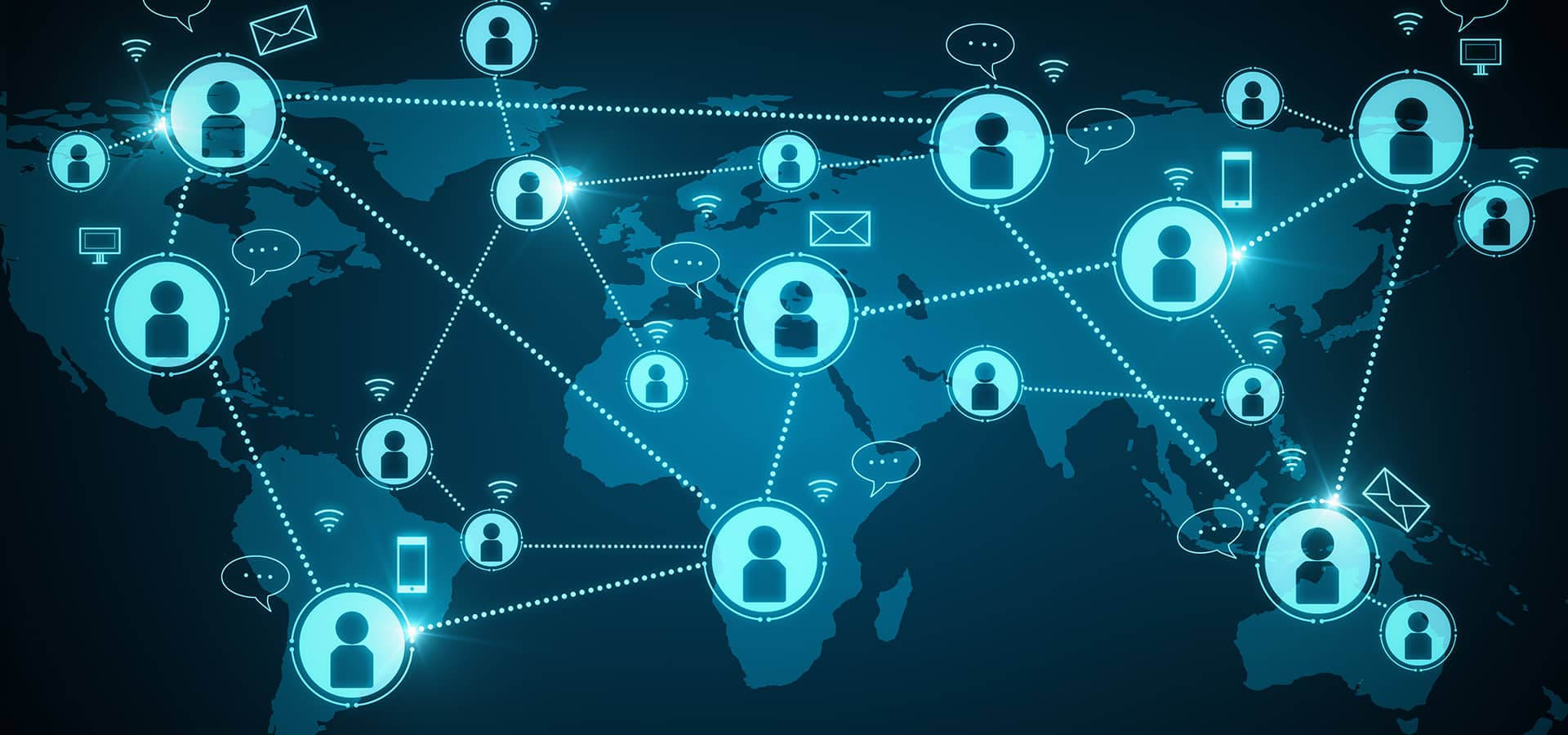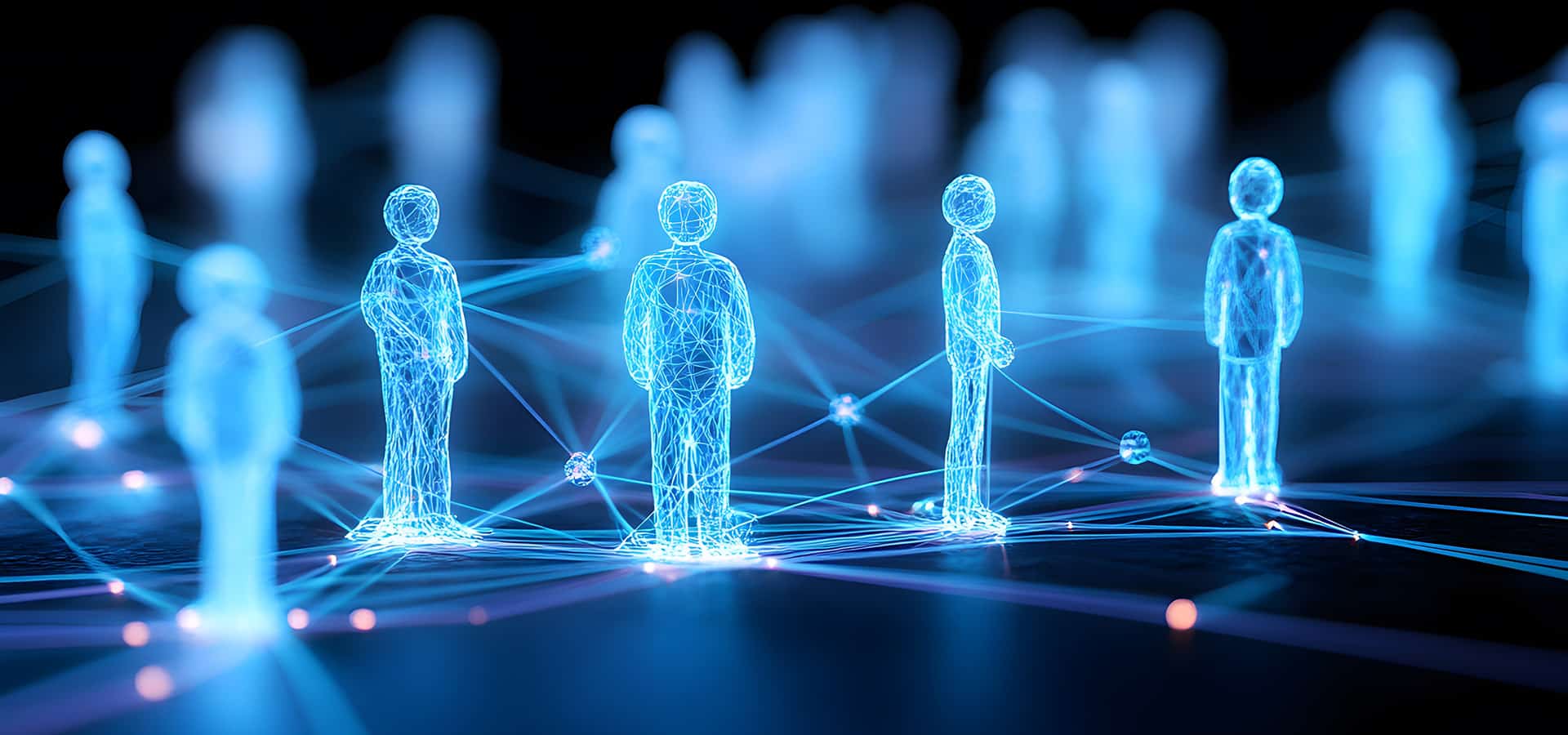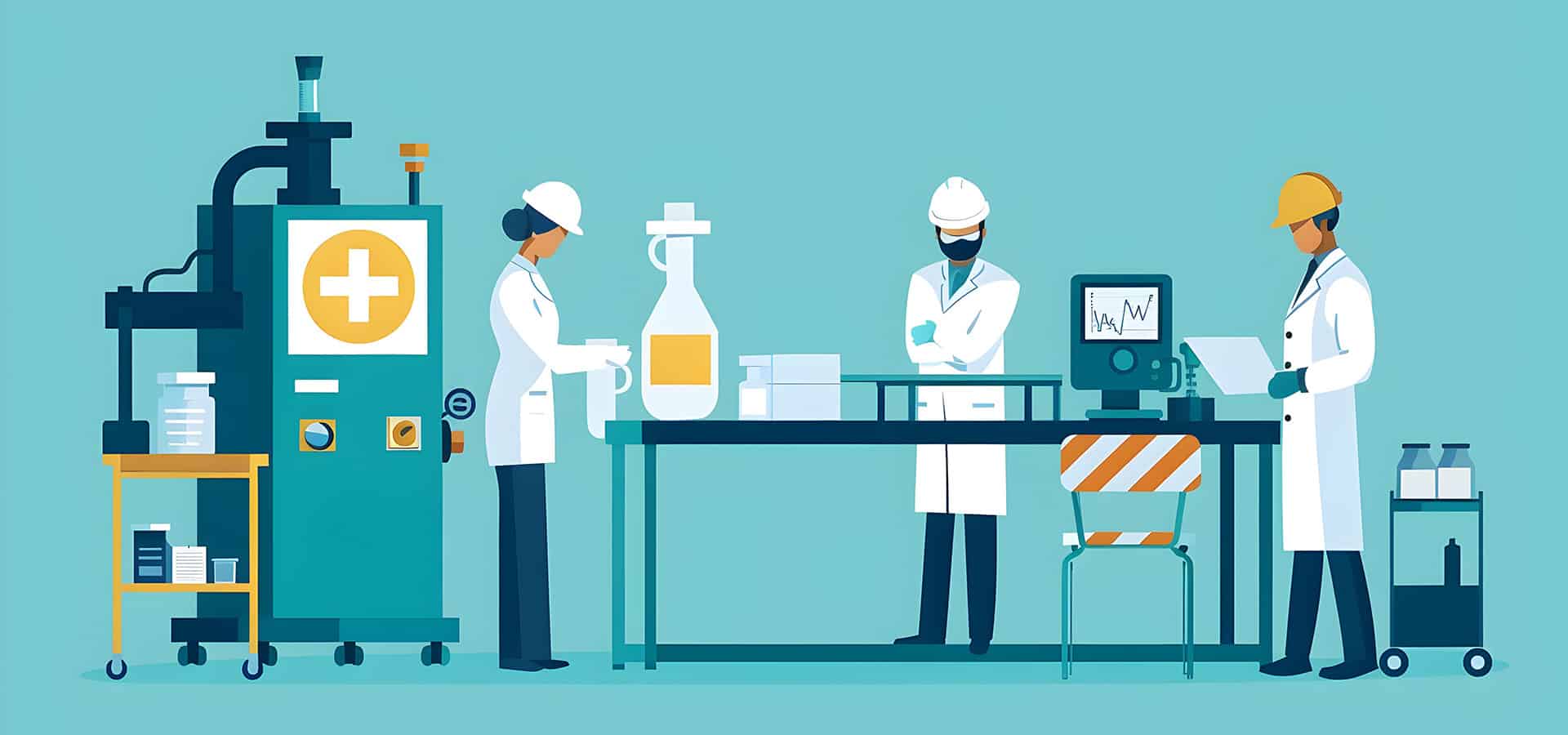It’s not quite apples and oranges, but it’s close.
When Revel had the chance to buy Randy Borns’ agency, Borns B2B, two years ago, we didn’t hesitate. We were looking to grow our expertise with business-to-business (B2B) clients. Randy spent almost 40 years in the B2B industry. He has forgotten more about B2B marketing than most people will ever know.
Whenever I’m asked how B2B marketing is different from B2C, I refer to Randy’s article from his Marketeering newsletter. This piece has been updated with new stats and facts.
What makes B2B marketing unique?
If you’re selling ice cream to consumers, you need business-to-consumer (B2C) marketing. If you’re selling ice cream to grocery store chains, you need business-to-business (B2B) marketing. Marketing to businesses is quite different than to consumers. Here are seven ways B2B marketing is different from B2C:
1. B2B audiences are much smaller (hundreds vs. thousands)
Your customer and prospect lists should be scrutinized, segmented, and appended on an ongoing basis. The more you get to know these contacts, the more strategic you can be.
Keep these questions in mind when crafting your marketing content:
- What are your audience’s pain points?
- How do your products and services solve their problems?
- Do you have buyer personas that lay out their goals and challenges?
Start by asking yourself, “How can I help?” and go from there.
2. B2B marketing gets less exposure or fewer impressions than consumer marketing.
So, your brand message must be clear, concise, and consistent in every context.
Pay equal attention to your visual and non-visual brands. The non-visual brand includes:
- Brand story
- Brand promise
- Unique value proposal (UVP)
- Elevator pitch
- Buyer personas
- Tagline
A blog about brand voice dives into this topic more.
3. B2B audiences include people who make purchasing decisions as a profession
So they will tend to be more pragmatic than emotional. That doesn’t mean that B2B marketing has to be boring. For example, Mötley Crüe drummer Tommy Lee and his wife Brittany Furlan are pitching an email marketing service. This is not the same old situation!
4. The B2B sales channel will require various training, incentives, and sales tools
That includes your salesforce, independent reps, dealers, and distributors with various needs and concerns. B2B buyers consume an average of 13 content pieces before deciding on a vendor. (Source: FocusVision)
5. The B2B customer base is made up of influencers and decision-makers
Business owners, engineers, and purchasing managers have various needs and concerns. In fact, the typical buying group for a complex B2B solution involves six to 10 decision-makers. (Source: Gartner)
6. Purchasing decisions take a long time
In the meantime, nurture prospects with relevant, ongoing touchpoints to keep your brand in front of their mind. A B2C sales cycle can take minutes. The average B2B buying cycle, on the other hand, is 6-12 months. (Source: Cognism)
7. The cost of a lead is high.
B2B relationships are cultivated a few at a time. Adding only a handful of new customers annually for many B2B organizations can mean success. The cost to acquire a new retail customer is as low as $10, whereas a new B2B customer can cost several hundred dollars, even thousands, to land.
B2B and B2C marketing are not quite apples and oranges, but it’s close. B2B marketers face unique challenges. By keeping these differences in mind, you’ll have a leg up on the competition and be converting prospects to customers in no time.
Download the infographic about The Difference Between B2B and B2C Marketing












